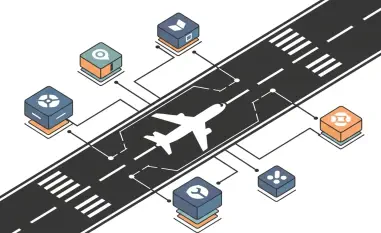Cabin connectivity promised seamless service, but the reality is a crowded publish–subscribe network where dozens of vendors’ devices trade messages in milliseconds while quietly expanding an internal attack surface that traditional defenses do not touch. Transport encryption locks down links, and broker rules gate who can subscribe, yet the most sensitive exposure emerges after lawful receipt when an authorized device ingests raw values and infers far more than the mission requires. That asymmetry matters in a sector built on co-development and compliance, where the line between performance data and proprietary know-how is thin and the line between safety telemetry and passenger privacy is thinner still. A recent testbed study grounded the debate by measuring both privacy exposure and latency, showing that the right controls can live at the edge without blowing timing budgets, provided privacy is treated as a first-class requirement at the point of data creation.
The Cabin Trust Gap: Where Protection Breaks Down
Modern cabins run on a scaled publish–subscribe pattern in which sensors publish to a broker and subscribers receive selected topics, and in that model link-layer security works as designed while a subtler problem takes shape inside the trust boundary. Once an approved endpoint reads a full payload, there is nothing in the transport stack that stops it from mining latent signals, correlating streams, or reconstructing high-fidelity profiles that were never intended to be shared. That gap reshapes incentives across the supply chain: equipment makers fear exposing intellectual property through routine telemetry, integrators face pressure to strip detail, and operators risk either degraded features or accidental collection of personal data. In practice, the policy that matters is not only who can receive a message but what any recipient can derive from it upon receipt.
The testbed evidence sharpened this point by demonstrating that devices which fully comply with access policies still posed the largest inference risk because compliance granted them visibility into entire messages rather than need-to-know slices. Moreover, the exposure did not hinge on exotic exploits or over-the-air interception, which current radio protections largely deter. It stemmed from sanctioned analytics running where compute was available, turning innocuous readings into blueprints and behavioral cues. This reality argues for a shift in design philosophy from perimeter trust to data-centric controls. Minimizing content before it hits the broker, bounding precision to mission needs, and curbing cross-topic correlation at the edge formed the core of a model that reduced leakage without impeding certified workflows or service-level agreements.
How Leakage Happens in Practice
Telemetric streams that seem routine under operational checklists often carry secondary structure that trained models can amplify, and that is where unintended disclosure takes root in multi-vendor cabins. Take a smart galley appliance publishing temperature curves to coordinate power budgets: the thermal signature over time doubles as a fingerprint of brewing logic, allowing any credentialed client to reverse-engineer sequences that took years to refine. Replace temperature with motion and the stakes shift to passengers. Accelerometers built into seats can confirm occupancy or belt status efficiently, yet the same raw traces embed subtle cues about breathing, tremors, or posture that move far beyond a binary state. Encryption in transit does nothing at this stage because the risk begins after decryption, within policy.
The study’s mixed-hardware bench underscored that these leaks are feasible with commodity tooling, not specialized labs, and that the most powerful extraction pathways relied on simple access to raw values. Feature engineering and basic classifiers were enough to recover proprietary timing or approximate physiological signals under normal traffic loads. Importantly, curbing topics or throttling rates delivered only marginal relief because the leak rides on the shape of each reading rather than the volume of messages. The lesson was not to halt sharing but to transform it early: publish summaries that preserve operational intent while stripping surplus detail, and, when raw data is unavoidable for a control loop, inject calibrated uncertainty so that downstream inferences become statistically fragile without breaking the function.
Protect at Creation and Timing Realities
Effective defenses in this environment began at the sensor and traveled forward, replacing a reactive stance with proactive guarantees that survived broker hops and vendor boundaries. Differential privacy offered a direct path by adding controlled noise to each reading, tuned so that aggregate patterns remained useful while individual values lost the fine resolution that powers reverse engineering and biometric inference. When calibrated per sensor type and trust tier, noise preserved fault detection and trend tracking, preventing disclosure of exact curves or micro-variations that carry sensitive payloads. Secret sharing addressed a different failure mode by splitting a value into multiple pieces sent along independent paths, ensuring no single listener could reconstruct ground truth, which discouraged opportunistic mining by any one device.
Engineering concerns centered on latency, resilience, and cabin-grade resource limits, and the testbed’s measurements cut through speculation with concrete timing. The privacy math itself proved lightweight, typically consuming well under one percent of processing time on constrained nodes, while end-to-end delay rose mainly with publish–subscribe hop counts and broker topology. Secret sharing added fragility when shares arrived late or dropped, so deployments needed redundant paths and bounded reconstruction windows to meet control-loop deadlines. The practical guidance that followed was straightforward: push transformation to the edge, keep routes short and reliable, tune privacy to sensor sensitivity and partner trust, and, where control loops demand tight jitter, offload privacy logic to small hardware blocks. Adopting these steps maintained service quality while shrinking the room for over-inference.













